


The Drive For Excellence
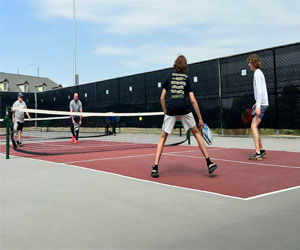
Pickleball, often hailed as one of the fastest-growing sports in the world, has earned its reputation for being not only accessible and fun but also fiercely competitive. What sets pickleball apart is its ability to cater to players of all ages and skill levels, from casual recreational enthusiasts to highly competitive athletes. In this article, we'll delve into the competitive aspects of pickleball and explore what drives players to strive for excellence.
Skill Development: Pickleball requires a unique set of skills that combine the finesse of table tennis, the agility of badminton, and the strategic elements of tennis. Competitive players dedicate significant time to developing these skills, including shot placement, spin control, and precision. The pursuit of mastery in these areas is a key driver of competitiveness.
Strategic Play: While pickleball is known for its social and recreational appeal, competitive players bring a new level of strategic thinking to the game. Each point is a mini-battle of wits, with players analyzing their opponents' weaknesses, anticipating shots, and creating opportunities for winning plays. Strategic innovations such as the third shot drop and stacking are embraced to gain a competitive edge.
Tournaments And Rankings: The competitive aspect of pickleball is exemplified by the numerous tournaments held worldwide, attracting players who aim to compete at the highest levels. These events include local, regional, national, and international competitions. The excitement and prestige associated with tournaments drive players to continually refine their skills and seek recognition in the form of rankings and titles.
Team Play: Pickleball is often played in doubles format, which adds a team dynamic to the sport. Competitive players not only seek individual excellence but also thrive on building strong partnerships with their playing partners. The ability to coordinate strategies, cover the court effectively, and complement each other's strengths becomes a critical element of success in doubles play.
Physical Conditioning: Competitive pickleball players recognize the importance of physical fitness and conditioning. Agility, speed, and endurance are crucial for enduring long matches and outperforming opponents. Players often incorporate cross-training exercises and cardiovascular workouts into their routines to maintain their competitive edge.
Mental Toughness: Like any competitive sport, pickleball challenges players both physically and mentally. The ability to stay focused under pressure, remain calm in tight situations, and bounce back from setbacks is crucial for success. Competitive players work on their mental toughness through visualization, meditation, and on-court experience.
Growth Of Pickleball Clubs: The surge in pickleball's popularity has led to the establishment of dedicated pickleball clubs and leagues. These organized groups provide a competitive environment where players can consistently challenge themselves against a variety of opponents. This ecosystem is a breeding ground for competitive play.
Pursuit Of Rankings: Competitive pickleball players often strive to achieve high rankings in their age groups or skill levels. Various rating systems, such as the USAPA (USA Pickleball Association) Skill Rating, help players gauge their abilities and set goals for improvement.
The competitive aspects of pickleball are a testament to the sport's adaptability and inclusivity. While it can be enjoyed at a casual, recreational level, it also provides a platform for dedicated players to push the boundaries of their abilities and achieve excellence. From skill development to strategic play, tournaments, and the pursuit of rankings, competitive pickleball embodies the drive for excellence and the desire to continually improve. Whether you're an aspiring competitor or a passionate recreational player, the competitive spirit of pickleball offers an exciting and rewarding journey of self-improvement and competition.


A Journey Of Innovation And Growth
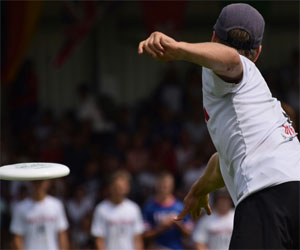 The Frisbee's origins can be traced back to the 1950s, when American inventor Fred Morrison and Warren Franscioni developed the first plastic flying disc. Initially, it was just a toy, popular for tossing around in backyards and parks. However, the transformation from a casual plaything to a sport began in the 1960s, driven by a group of students at Columbia High School in Maplewood, New Jersey.
The Frisbee's origins can be traced back to the 1950s, when American inventor Fred Morrison and Warren Franscioni developed the first plastic flying disc. Initially, it was just a toy, popular for tossing around in backyards and parks. However, the transformation from a casual plaything to a sport began in the 1960s, driven by a group of students at Columbia High School in Maplewood, New Jersey.
In 1968, these students, led by Joel Silver, introduced a new game that involved using a Frisbee to score goals. They called it "Ultimate Frisbee," laying the foundation for what would become one of the most iconic and widely recognized flying disc sports. Ultimate Frisbee's self-officiation, competitive structure, and strong emphasis on sportsmanship set it apart from casual Frisbee tossing and contributed to its growth as a legitimate sport.
The formation of governing bodies played a crucial role in the transformation of Frisbee into a sport. In 1979, the Ultimate Players Association (now USA Ultimate) was established to provide structure and consistency to the growing Ultimate community. Standardized rules and competitive leagues began to emerge, setting the stage for the development of a sport with a global presence.
Ultimate Frisbee's transformation was not limited to the United States. The sport spread internationally, with various countries adopting the game and forming their own national associations.
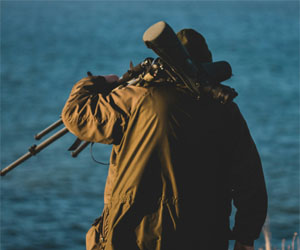

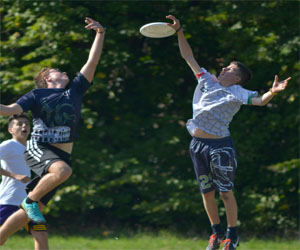

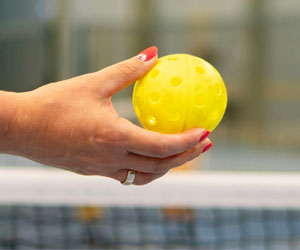
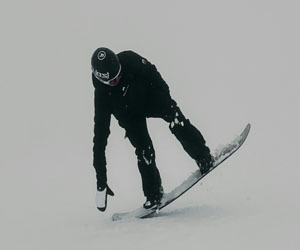
 Outdoor exploration unveils the beauty and wonder of the natural world. It's a chance to wander through pristine forests, scale rugged mountain peaks, or paddle across tranquil lakes, all while taking in the breathtaking scenery and the awe-inspiring landscapes that nature offers. Whether you're watching the sun set over a canyon, witnessing a cascading waterfall, or stargazing under a clear night sky, the grandeur of the natural world becomes a playground for your senses.
Outdoor exploration unveils the beauty and wonder of the natural world. It's a chance to wander through pristine forests, scale rugged mountain peaks, or paddle across tranquil lakes, all while taking in the breathtaking scenery and the awe-inspiring landscapes that nature offers. Whether you're watching the sun set over a canyon, witnessing a cascading waterfall, or stargazing under a clear night sky, the grandeur of the natural world becomes a playground for your senses.
The allure of outdoor exploration is deeply rooted in the pursuit of the unknown and the challenge of the wild. Hiking along winding trails, navigating through dense forests, or ascending rocky peaks all demand adaptability, resourcefulness, and courage. These challenges push your boundaries and provide a sense of accomplishment that is hard to find elsewhere.
Outdoor exploration encourages us to reconnect with our most primal instincts. As we set out on expeditions and embark on adventures, we become more attuned to the environment, listening to the rhythm of the earth, smelling the scent of the forest, and feeling the solid ground beneath our feet. This sensory experience allows us to reconnect with the world in a profound and meaningful way.
Finding Peace In The World Of Feathers
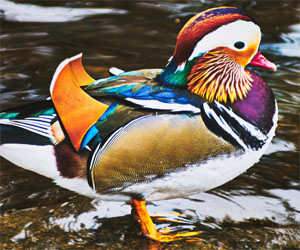 Nature's Tranquil Haven: Birdwatching takes you to some of the most serene and tranquil corners of the natural world. Whether you're perched on a park bench or nestled in the woods, the act of focusing on the sights and sounds of birds creates a connection with nature that calms the mind. The rustling leaves, gentle streams, and melodious bird songs provide a harmonious backdrop for relaxation.
Nature's Tranquil Haven: Birdwatching takes you to some of the most serene and tranquil corners of the natural world. Whether you're perched on a park bench or nestled in the woods, the act of focusing on the sights and sounds of birds creates a connection with nature that calms the mind. The rustling leaves, gentle streams, and melodious bird songs provide a harmonious backdrop for relaxation.
Mindful Presence: Birdwatching encourages a state of mindfulness, where you become fully present in the moment. The act of observing birds requires concentration and patience, allowing you to escape the worries of yesterday and the anxieties of tomorrow. Your focus shifts to the intricate beauty of the avian world unfolding before you.
Stress Reduction: Research has shown that spending time in natural settings, like birdwatching in a park or forest, can significantly reduce stress levels. The gentle rhythm of watching birds, paired with the release of stress-reducing hormones, can lead to a sense of calm and inner peace.
Paintball Skill Development
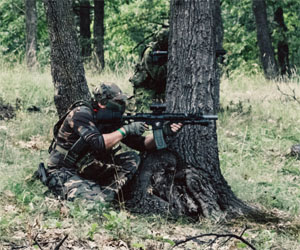 2. Stealth And Camouflage
2. Stealth And Camouflage
Paintball involves a fair amount of sneaking around and avoiding detection. Developing stealth and camouflage skills is vital for staying concealed and moving quietly on the battlefield. Use natural cover, stay low, and minimize noise to enhance your stealth abilities.
3. Speed And Agility
Paintball requires a level of physical fitness, particularly speed and agility. Quick movement, sharp reflexes, and the ability to change positions rapidly can help you evade opponents and seize advantageous locations. Regular cardiovascular and strength training can enhance your overall fitness.
4. Communication And Teamwork
Effective communication and teamwork are essential for success in paintball. Being able to coordinate with your teammates, share information about enemy positions, and work together seamlessly is a fundamental skill. Practice using radios, hand signals, or verbal cues for clear and timely communication.
5. Tactical Awareness
Understanding the tactics and strategies that apply to different game scenarios is a key paintball skill. Familiarize yourself with a variety of tactics, such as flanking, cover fire, and suppression, and adapt them to your team's objectives and the field's layout.
6. Adaptable Strategy
Developing adaptable strategies is crucial because no two paintball games are the same. The ability to adjust your tactics on the fly in response to the evolving situation is a hallmark of a skilled player.
Pickleball Court Dynamics
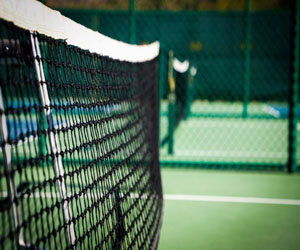 The Non-Volley Zone: Also known as "the kitchen," this is a crucial area on the court that extends 7 feet from the net on each side. The kitchen is a no-volley zone, meaning that players cannot hit the ball out of the air within this zone. This rule encourages strategic play, as players must carefully position themselves to avoid faulting.
The Non-Volley Zone: Also known as "the kitchen," this is a crucial area on the court that extends 7 feet from the net on each side. The kitchen is a no-volley zone, meaning that players cannot hit the ball out of the air within this zone. This rule encourages strategic play, as players must carefully position themselves to avoid faulting.
The Baseline: The back line of the court is where serves must originate. Players serve from behind this line, and the serve must clear the non-volley zone on the opposite side of the court. The baseline is a key starting point for each point and plays a role in determining the position of the serving team.
The Net: The pickleball net stands 34 inches at the center, which is lower than traditional tennis or badminton nets. The lower net height demands precise and controlled shots, particularly during the serve and volleys near the net.
Serving Boxes: Each side of the court is divided into two serving boxes. The serving team must serve diagonally into the opponent's service box, following specific serving rules. The diagonal serves create unique angles and placement opportunities, adding to the dynamic court dynamics.
Doubles vs. Singles: Pickleball is typically played in both doubles and singles formats, with different strategies and court dynamics in each. In doubles, players work as a team, cover the court together, and employ coordinated strategies. In singles, players have more court to cover, leading to increased lateral movement and reliance on individual skills.
Shot Placement: The compact court size emphasizes the importance of shot placement.
Wave Dynamics In Surfing
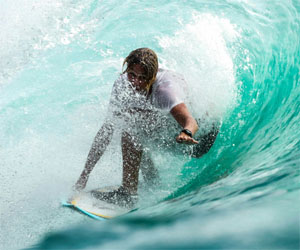 Wave Direction: Wave direction is an essential component of wave dynamics. The direction from which a wave approaches a coastline or surf break significantly influences the ride. Surfing enthusiasts pay close attention to the angle at which waves approach the shore. A perfectly aligned wave can offer a long, thrilling ride, while a misaligned wave might break in a less-than-ideal manner.
Wave Direction: Wave direction is an essential component of wave dynamics. The direction from which a wave approaches a coastline or surf break significantly influences the ride. Surfing enthusiasts pay close attention to the angle at which waves approach the shore. A perfectly aligned wave can offer a long, thrilling ride, while a misaligned wave might break in a less-than-ideal manner.
Wave Period: Wave period, often expressed in seconds, refers to the time it takes for two consecutive wave crests to pass a fixed point. Longer wave periods are indicative of powerful and well-organized swells, resulting in cleaner and more rideable waves. Shorter wave periods can lead to choppy and less predictable conditions.
Wave Sets: Wave sets consist of groups of waves that arrive consecutively. In between sets, surfers experience lulls, creating moments of anticipation and readiness. Understanding the rhythm of wave sets is crucial for positioning and timing when paddling and catching waves. Surfers need to gauge the intervals between sets to be in the right place at the right time.
Types Of Waves:
The classification of waves based on their shape and breaking behavior plays a significant role in wave dynamics:
Reef Breaks: These waves break over a submerged reef or rocky bottom. Reef breaks can produce fast, hollow waves that are favored by experienced surfers.
Point Breaks: Point breaks are formed by waves breaking along a point of land. They create long, peeling waves that are ideal for graceful rides and maneuvers.